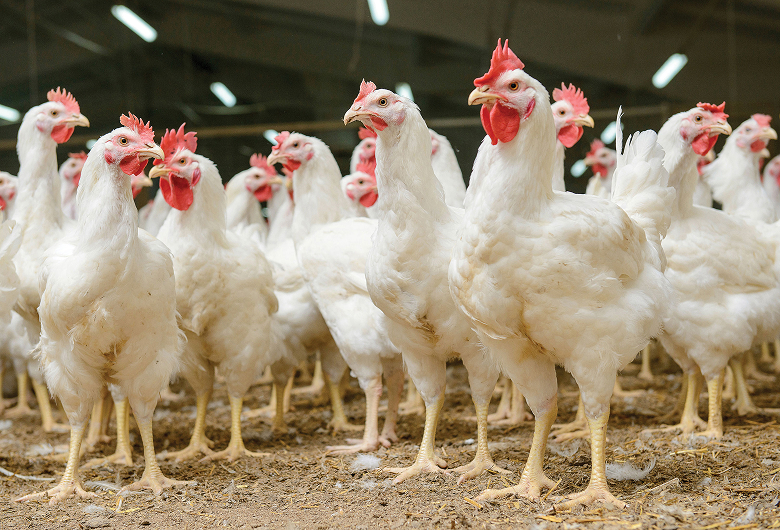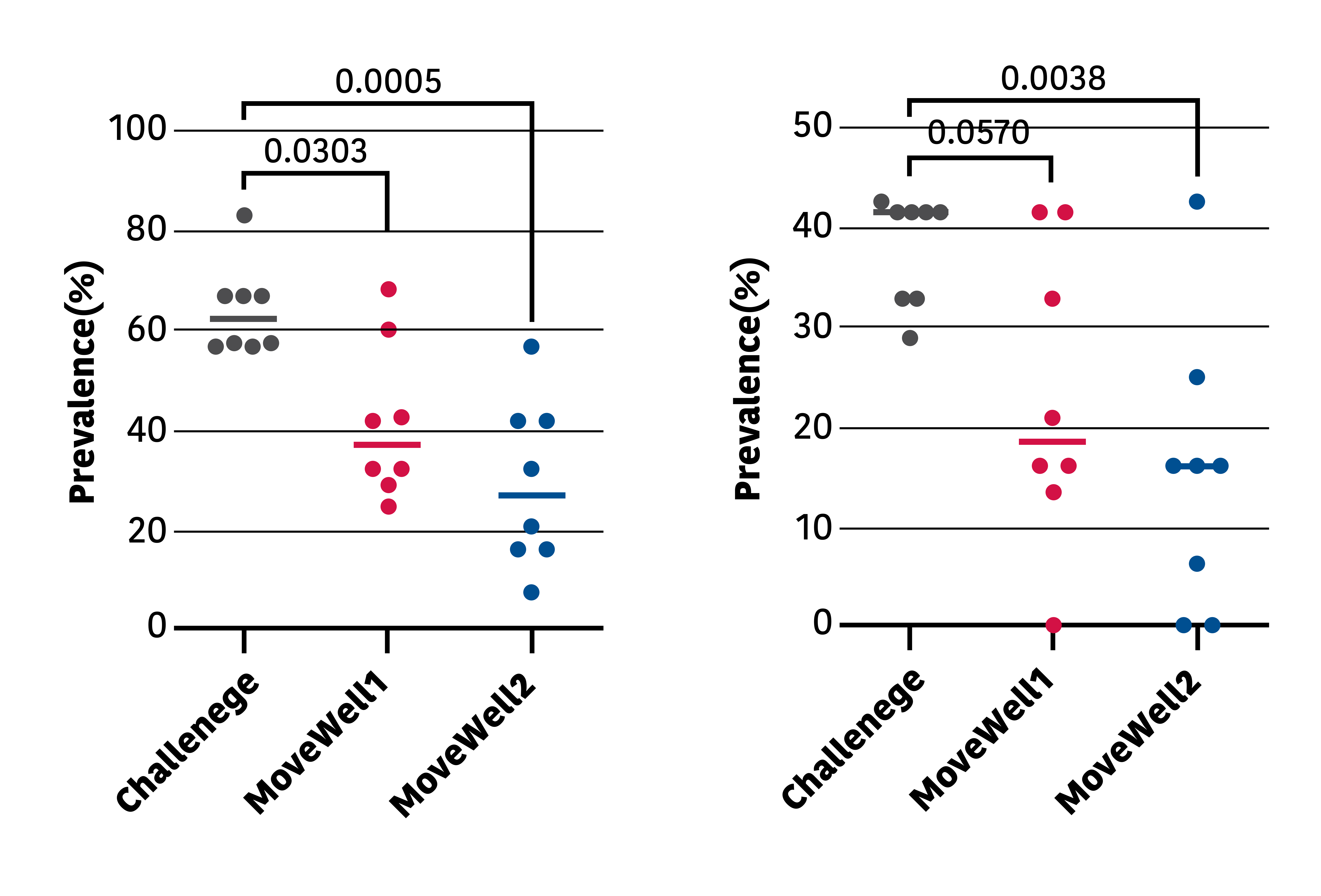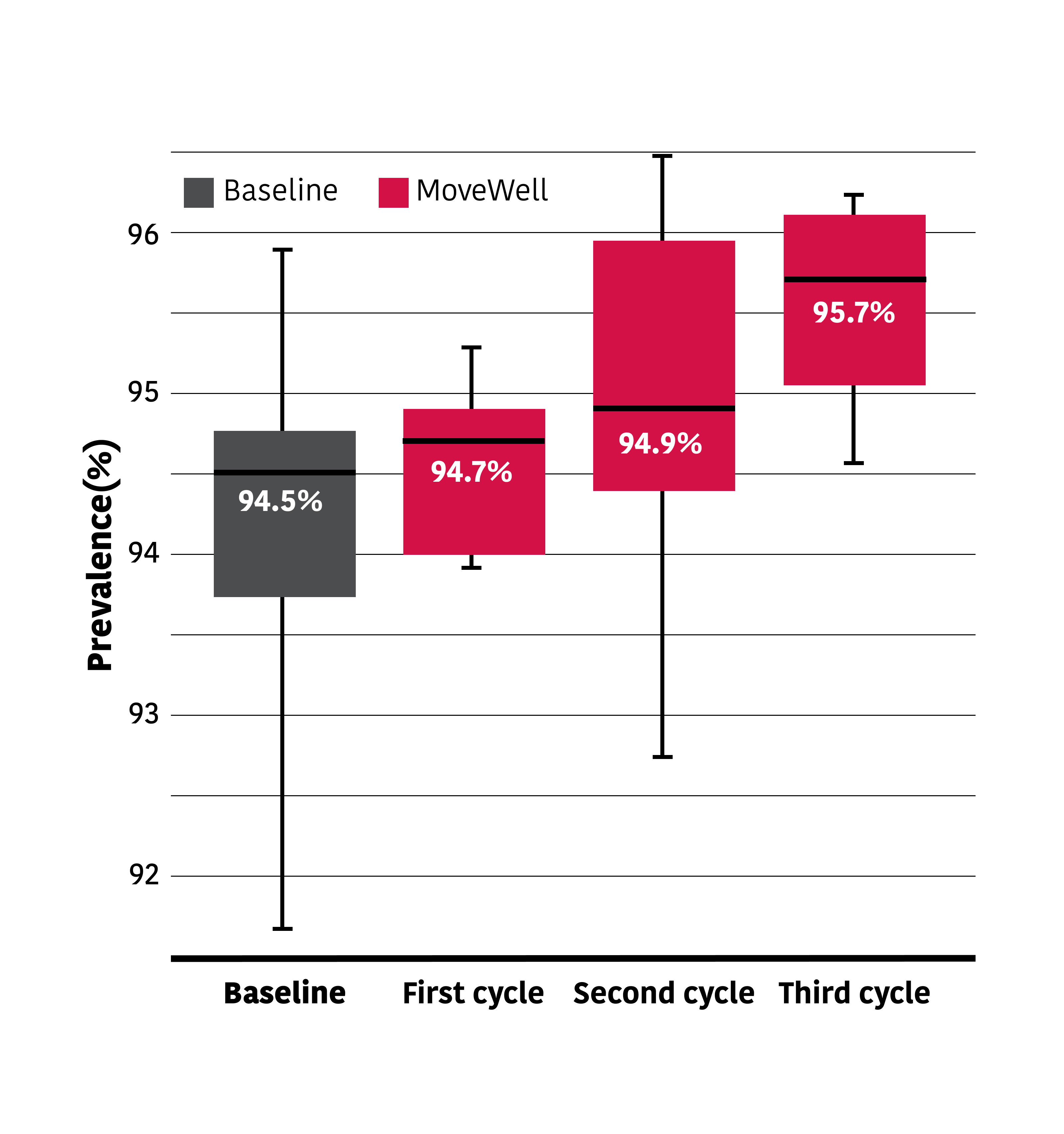

Help improve broiler mobility by reducing the risk of Enterococcus cecorum
Enterococcus species are prevalent and have long been considered commensal inhabitants of the chicken’s intestinal microbiome. Enterococcus cecorum has been identified as a cause of lameness issues in poultry, causing mobility issues amongst infected birds. The Arm & Hammer Animal Nutrition team offers a solution with Bacillus-based MoveWell, designed to minimize the impact of E. cecorum, leading to optimized mobility.
Research on E. cecorum infection suggests a link to broiler mobility challenges
E. cecorum causes Enterococcal Spondylitis, also known as “Kinkyback”, and has also been identified as one cause of Femur Head Necrosis, a complicated issue known to have several bacterial causes. Enterococcal Spondylitis primarily affects the vertebral bones and surrounding tissues, while femur head necrosis affects the femur. Both diseases cause lameness in poultry. Data collected in our lab since 2015 from more than 2,500 intestinal tract samples from pullets, breeders, and day-of-hatch (DOH) chicks demonstrated that E. faecalis, E. cecorum, and other Enterococcus species were frequently recovered from the intestinal tract of birds when using standard microbiological methods for recovery of lactic acid bacteria. E. cecorum was rarely found in the intestinal tract of DOH chicks (<1%) but was more abundant in pullets (~8%) and breeders (5.5%). Although these bacteria are frequently associated with birds, they have been known to be opportunistic poultry pathogens and have been increasingly associated with disease.¹
E. cecorum infections are thought to originate from translocation of intestinal E. cecorum, leading to septicemia. As birds age, this septic phase of the infection gives way to the lameness phase, which typically peaks after 5 weeks of age. Lameness occurs as E. cecorum infects either the free thoracic vertebra, leading to Enterococcal Spondylitis, or the proximal femur, leading to Femur Head Necrosis. Enterococcal Spondylitis is characterized by a large inflammatory mass which occurs at the free thoracic vertebra. As this inflammatory mass grows, it compresses the spinal cord, leading to the hind limb paralysis characteristic of the disease, and causing mortality up to 15%.²
Arm & Hammer Animal Nutrition conducted a survey of flocks experiencing symptoms consistent with enterococcal disease issues to better understand bacterial prevalence in these cases. A total of 237 spine or femur head samples from flocks experiencing lameness issues were tested for E. cecorum and E. faecalis. E. cecorum was recovered from 135 samples (57%), 12 of which also carried E. faecalis. These results illustrate the prevalence of E. cecorum in joints from flocks experiencing lameness issues.
To validate the ability of E. cecorum to translocate from the intestine to the spleen and free thoracic vertebrae, broilers were orally challenged at 4 days of age with pathogenic E. cecorum strain and necropsied at 42 days of age to measure sepsis in the spleen and spondylitis in the free thoracic vertebrae (FTV). Effect of supplementation with two formulations of MoveWell on E. cecorum infection was also tested. E. cecorum prevalence was high in the spleen and FTV and MoveWell 1 and MoveWell 2 supplementation significantly reduced translocation of E. cecorum from the gut to the spleen and reduced FTV infection in broilers challenged with E. cecorum.

In a commercial trial, supplementation with MoveWell improved livability in three consecutive growth cycles compared to the baseline.
MOVEWELL DELIVERS IMPROVED MOBILITY AMONGST BROILER CHICKENS
 A field study feeding MoveWell resulted in increased livability
A field study feeding MoveWell resulted in increased livability
Uniquely designed to reduce the incidence of E. cecorum infection in broiler chickens, only MoveWell can significantly reduce translocation of E. cecorum potentially leading to reduction in Spondylitis and mobility issues caused by E. cecorum when supplemented in broiler diets.
Interested in learning more about how MoveWell can improve mobility rates and help impact your bottom line? Contact your Arm & Hammer Animal Nutrition representative or visit ahanimalnutrition.com.

